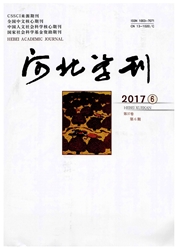

 中文摘要:
中文摘要:
区域人口空间的合理布局是促进京津冀协同发展的重要支撑。本文在系统分析和综合评价京津冀各地人口发展与土地资源及经济发展关系的基础上,结合区域功能布局定位,在多目标约束下将京津冀地区划分为人口稳定优化区、人口重点集聚区、人口适度增长区和人口限制增长区等四类人口功能分区。进而针对各人口功能区提出差异化的人口引导对策,促进京津冀地区人口的均衡发展:人口稳定优化区要加快疏散中心城区人口向郊区转移,在市域内形成多中心空间发展格局,并引导人口向周边地区转移;人口重点集聚区和人口适度增长区要承接人口稳定优化区过剩人口转移,同时增加城市自身对人口的吸引力;人口限制增长区应严格限制人口总量增长。
 英文摘要:
英文摘要:
The rational distribution of regional population has played an important role in supporting the coordinated development of Beijing,Tianjin and Hebei. Based on the systematic analysis and comprehensive evaluation of land resources and economic development relationship in Beijing,Tianjin and Hebei,and combined with the function layout of the region,Beijing- Tianjin- Hebei region is divided into four types of population function zoning,namely population stable optimization zoning,population key concentration zoning,population moderate growth zoning and population restrictive growth zoning. Then take corresponding guiding countermeasures for the population function zoning to promote the balanced development of population in Beijing,Tianjin and Hebei : first,population stable optimization zoning should accelerate the population dispersion from central city to the suburb and form polycentric spatial pattern.Meanwhile,guide the population transfer to the surrounding area; population key concentration zoning and population moderate growth zoning should undertake the surplus population transfer from population stable optimization zoning and increase the attractiveness of city itself over population; population restrictive growth zoning should strictly restrict the growth of population gross.
 同期刊论文项目
同期刊论文项目
 同项目期刊论文
同项目期刊论文
 期刊信息
期刊信息
